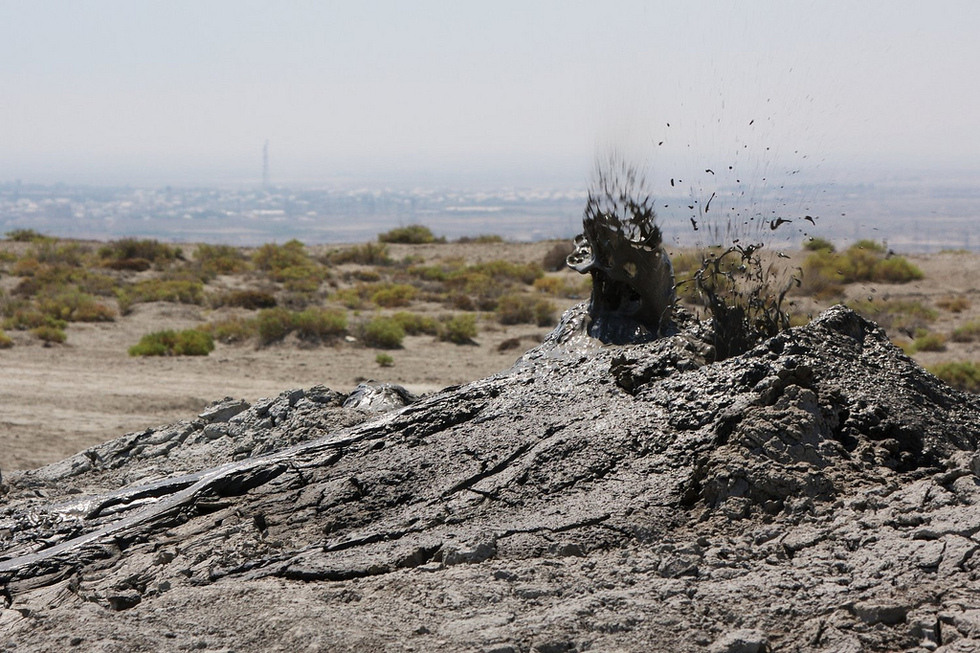Azerbaijan preparing atlas of mud volcanoes

By Nazrin Gadimova
For the first time in history, Azerbaijan is preparing an atlas of mud volcanoes on the planet.
This was announced by the Geology Institute Mud Volcanoes Department head Prof. Adil Aliyev.
Noting the fact that such atlas has not yet been prepared in the world, he said:"It was previously thought that the world has a 700-800 mud volcanoes but this figure increased to 900- out of which 300 volcanoes are located in Azerbaijan."
"During the preparation of the atlas, it became clear that there are more than two thousand mud volcanoes in the world today," he added.
"This is the data provided by Azerbaijani scientists which is now part of the world science," Aliyev said.
"Formerly there were different accounts on the number of mud volcanoes on the planet. We have conduced research for four years. During this time we have translated about 600 scientific sources from English. Earlier, we thought that 170 volcanoes were located in the southern of the Caspian sea. Then we carried out seismic surveys, satellite imagery, and all these led us to this conclusion that the number if higher than we expected."
Aliyev noted that there are 230 submarine mud volcanoes and 10 island volcanoes in the south of the Caspian Sea. To date, 344 mud volcanoes have been found in Azerbaijan, 133 of them are located in the Azerbaijani sector of the Caspian Sea.
The scientist believes that today it can be said that the mud volcanoes exist in all continents. "They are found in 42 countries-most of them over the past 10-15 years. At the same time, new mud volcanoes were discovered at the bottom of the Caspian, Black and Mediterranean seas," he said.
Aliyev noted that after drawing up a new map of Azerbaijan's mud volcanoes in 2003 with the help of satellite images,several more volcano were discovered.
"Previously we had no information about them. Most found volcanoes lye under a layer of silt. Earlier, we did not know so many submarine volcanoes, but now their number has increased significantly," the scientist said.
"We can say that the work on the new atlas is almost completed and it will be published in mid-2014 in three languages - Azerbaijani, Russian and English," the head of department concluded.
Oil and gas-rich Azerbaijan ranks first in the number of mud volcanoes in the world. Over a thousand mud volcanoes are known to exist in the world, and some 400 are located in the coastal area of Azerbaijan and the Caspian Sea.
The world's largest mud volcanoes - Boyuk Khanizadagh and Turaghai - are both in Azerbaijan. Boyuk Khanizadagh, the diameter and height of which are 10 kilometers and 700 meters respectively, erupted on October 10, 2001, shooting out flames 300 meters in the air. It was the highest record for flames shot from a mud volcano.
Mud volcanoes are a fairly widespread geological phenomenon. The dissemination of mud volcanoes usually indicates the existence of large oil and gas basins, so the large number of mud volcanoes in Azerbaijan reaffirms its richness and attracts the attention of scientists from all over the world.
Azerbaijan's rich fields of oil and gas condensate such as Lokbatan, Garadagh, Oil Rocks, and Mishovdag were discovered near mud volcanoes.
The lava, mud, and liquid spewed by mud volcanoes are used as raw materials for chemical and construction industries, as well as pharmacology.
In order to get a better understanding of the nature of mud volcanoes, ANAS Geology Institute holds joint research projects with the German Geological Sciences and Natural Resources Ministry within the Azerbaijani-German international technical and scientific cooperation.
